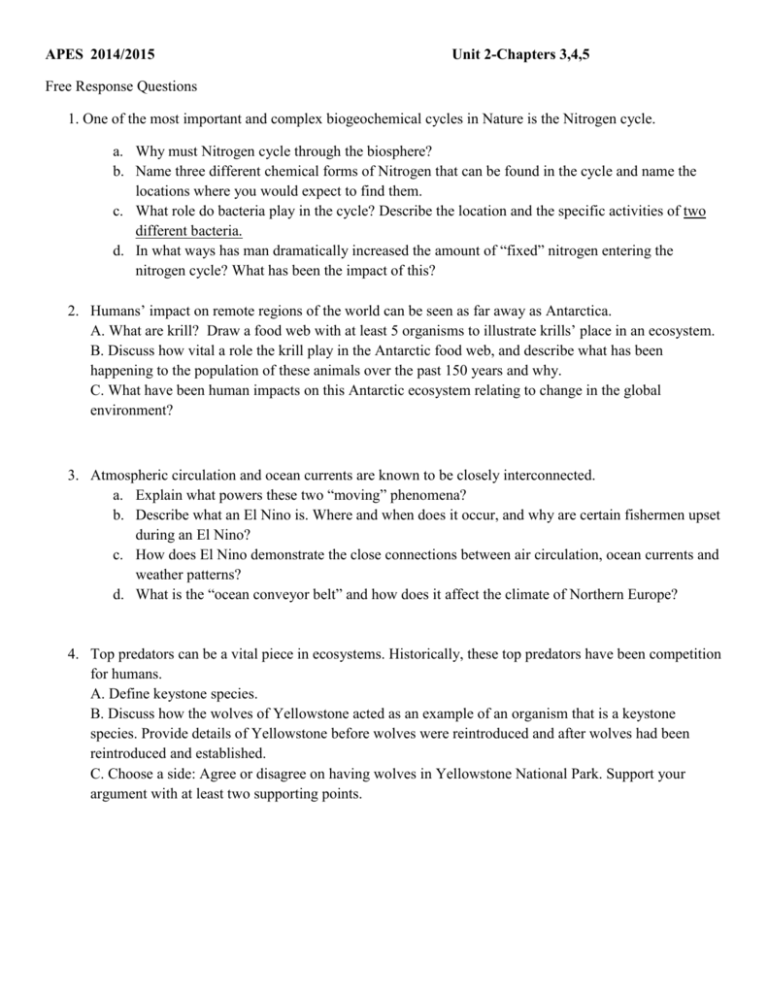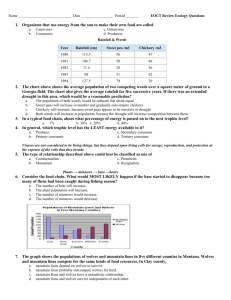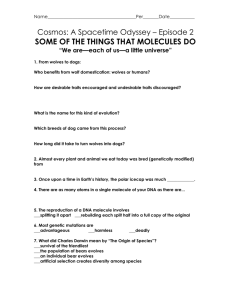APES 2014/2015 Unit 2-Chapters 3,4,5 Free Response Questions 1
advertisement

APES 2014/2015 Unit 2-Chapters 3,4,5 Free Response Questions 1. One of the most important and complex biogeochemical cycles in Nature is the Nitrogen cycle. a. Why must Nitrogen cycle through the biosphere? b. Name three different chemical forms of Nitrogen that can be found in the cycle and name the locations where you would expect to find them. c. What role do bacteria play in the cycle? Describe the location and the specific activities of two different bacteria. d. In what ways has man dramatically increased the amount of “fixed” nitrogen entering the nitrogen cycle? What has been the impact of this? 2. Humans’ impact on remote regions of the world can be seen as far away as Antarctica. A. What are krill? Draw a food web with at least 5 organisms to illustrate krills’ place in an ecosystem. B. Discuss how vital a role the krill play in the Antarctic food web, and describe what has been happening to the population of these animals over the past 150 years and why. C. What have been human impacts on this Antarctic ecosystem relating to change in the global environment? 3. Atmospheric circulation and ocean currents are known to be closely interconnected. a. Explain what powers these two “moving” phenomena? b. Describe what an El Nino is. Where and when does it occur, and why are certain fishermen upset during an El Nino? c. How does El Nino demonstrate the close connections between air circulation, ocean currents and weather patterns? d. What is the “ocean conveyor belt” and how does it affect the climate of Northern Europe? 4. Top predators can be a vital piece in ecosystems. Historically, these top predators have been competition for humans. A. Define keystone species. B. Discuss how the wolves of Yellowstone acted as an example of an organism that is a keystone species. Provide details of Yellowstone before wolves were reintroduced and after wolves had been reintroduced and established. C. Choose a side: Agree or disagree on having wolves in Yellowstone National Park. Support your argument with at least two supporting points.











